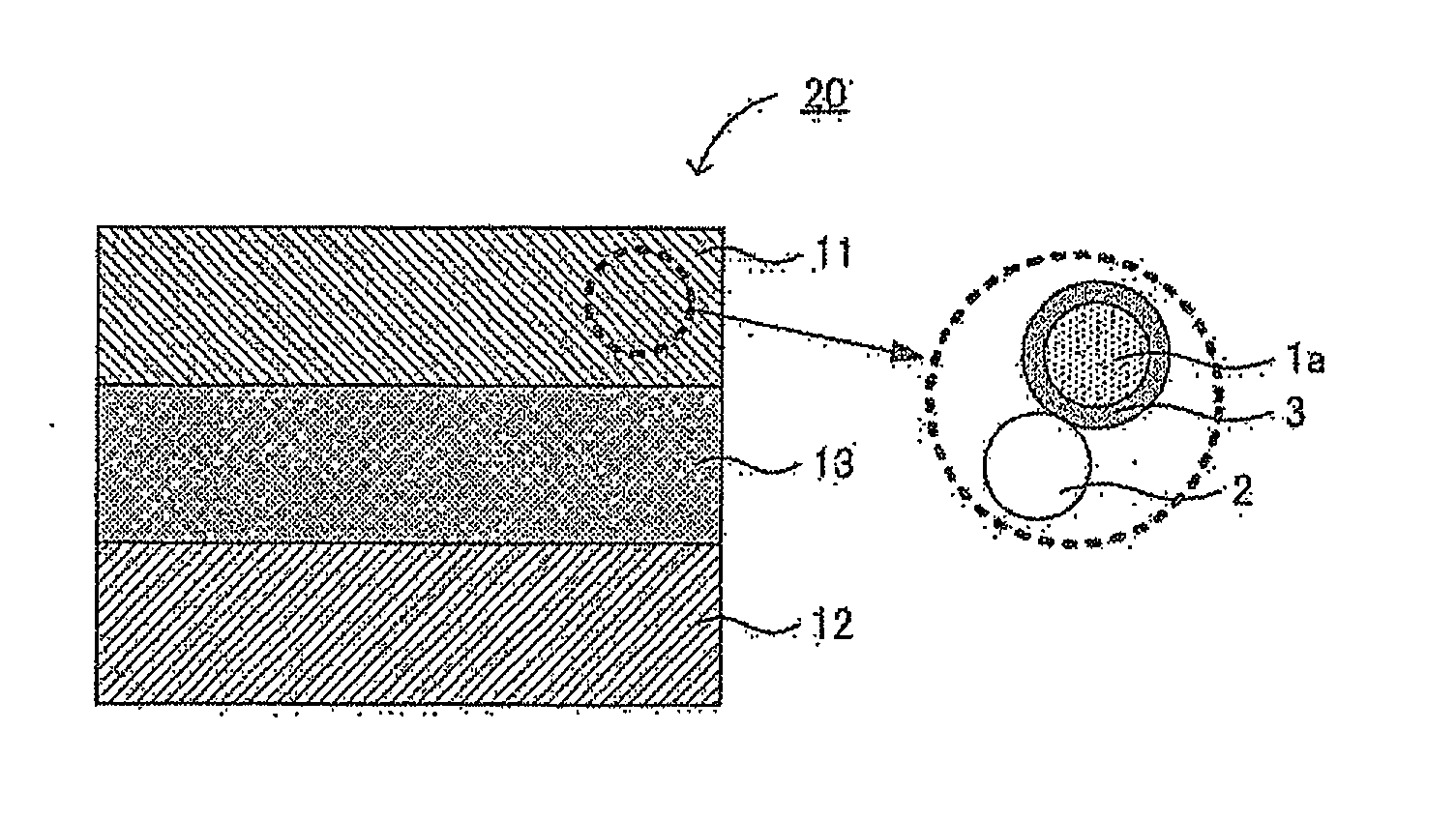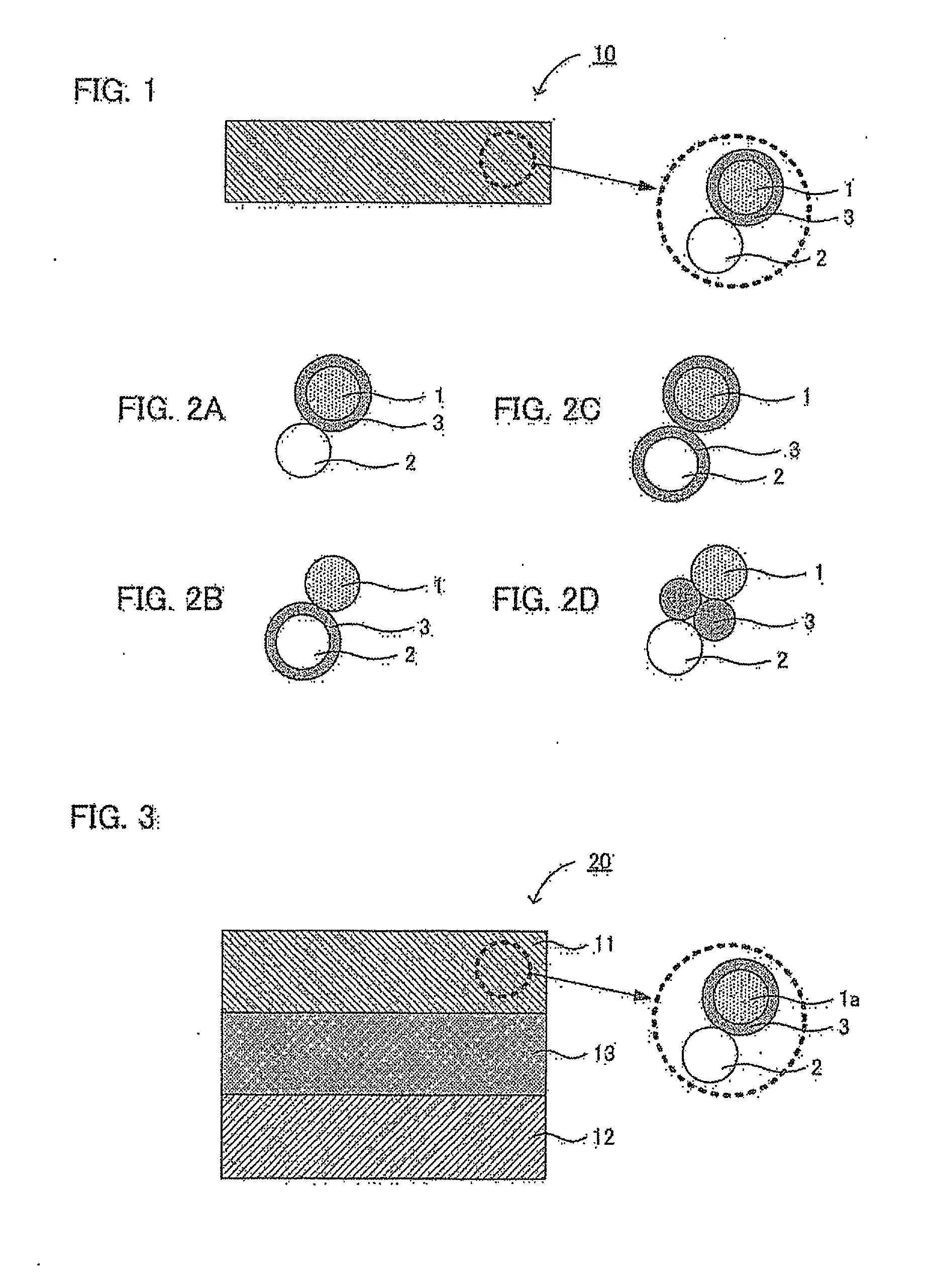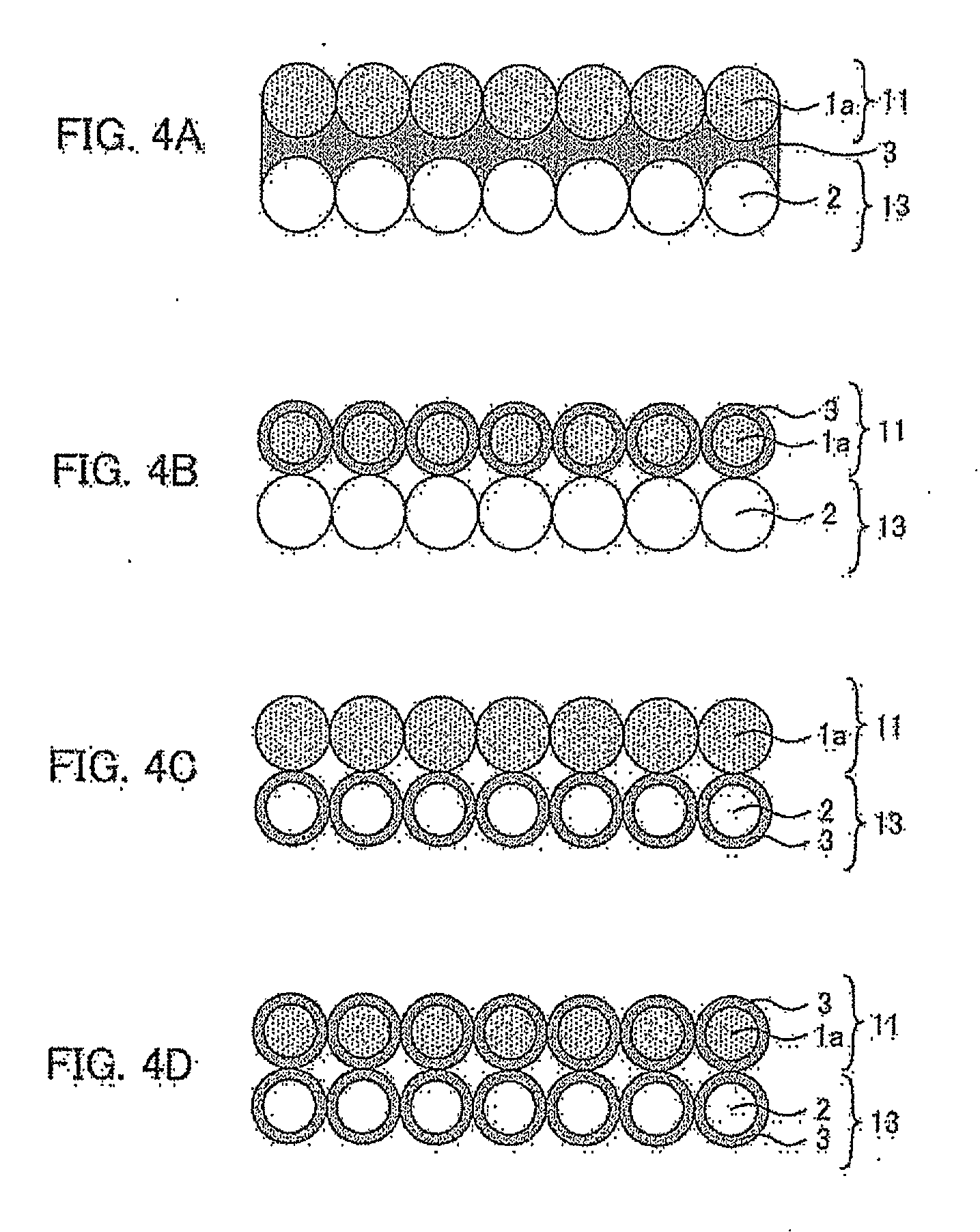Electrode body and all solid state battery
a solid-state battery and electrolyte technology, applied in the field of electrolyte bodies, can solve the problems of increasing interface resistance with time, and achieve the effect of reducing the resistance of the interface with time and excellent cycling characteristics
- Summary
- Abstract
- Description
- Claims
- Application Information
AI Technical Summary
Benefits of technology
Problems solved by technology
Method used
Image
Examples
example 1
[0094](Production of Cathode Body Having Second Solid Electrolyte Material)
[0095]First, a cathode active material layer made of LiCoO2 with a thickness of 200 nm was formed on a Pt substrate by a PVD method. Next, commercially available WO3 and Li2CO3 were mixed so as to be a molar ratio of Li:W=2:1 to produce pellets by pressing. Li2WO4 (a second solid electrolyte material) with a thickness of 5 to 20 nm was laminated on the above-mentioned cathode active material layer by a PVD method while regarding these pellets as a target. Thus, a cathode body having the second solid electrolyte material on a surface thereof was obtained.
[0096](Production of All Solid State Battery)
[0097]First, Li7P3S11 (a first solid electrolyte material) was obtained by the same method as the method described in JP-A No. 2005-228570. Incidentally, Li7P3S11 was a sulfide solid electrolyte material having a PS3—S—PS3 structure and a PS4 structure. Next, a power generating element 20 shown in the above-mentione...
PUM
 Login to View More
Login to View More Abstract
Description
Claims
Application Information
 Login to View More
Login to View More - R&D
- Intellectual Property
- Life Sciences
- Materials
- Tech Scout
- Unparalleled Data Quality
- Higher Quality Content
- 60% Fewer Hallucinations
Browse by: Latest US Patents, China's latest patents, Technical Efficacy Thesaurus, Application Domain, Technology Topic, Popular Technical Reports.
© 2025 PatSnap. All rights reserved.Legal|Privacy policy|Modern Slavery Act Transparency Statement|Sitemap|About US| Contact US: help@patsnap.com



